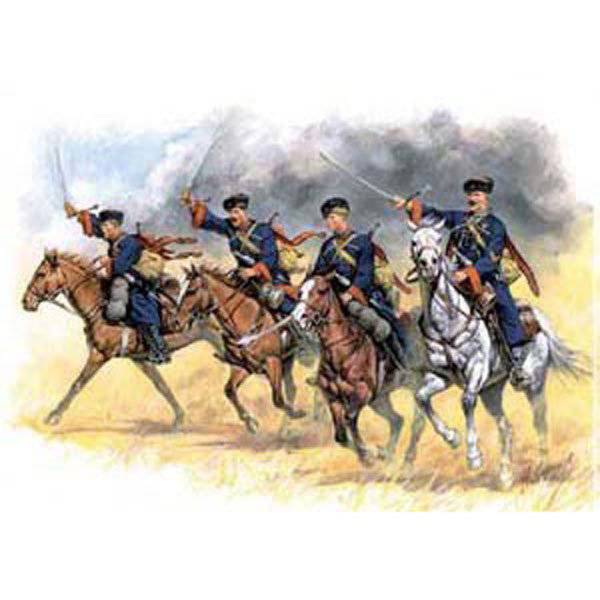Military culture of the Cossacks

The Cossacks and its most numerous and famous part - the Donians - contributed to history Russian state many glorious pages. The opinion of many Cossack culture researchers that the Cossacks are the essence of natural warriors is practically beyond doubt. The whole spiritual and material culture of the Don Cossacks is imbued with a military affair, customs and traditions related to war and military service.
The phrase "military culture" can be used to characterize this unique military class, following the example of the samurai culture in Japan, the Indian nihangs, and the ancient Spartans. The peculiarity of the Don Cossacks was a fairly high openness, the system absorbed all the best that the Cossack enemies could have.
What was the basis of the military art of the Cossacks?
- In the basement of the military culture of the Russian Cossacks lay the traditional hand-to-hand military hunting competitions. They went back to the ancient, still pre-Christian culture of Russia, the tribal system. They are based on generic male initiations (initiations), cultures of the “primitive hunter” and “rider”. These include wrestling "on breaking" ("under the buckles"), free-style wrestling, and fist fighting (in collective or in the form of a duel). Initiative elements were preserved in various games of children, customs of military camps for Cossacks, etc.
For example, “fighting for breaking” is a wrestling match, the task of the Cossack is with the help of wrestling actions from a preliminary belt capture to make the opponent touch the ground with his body. In a fist fight, the fighter's goal is to suppress the opponent's resistance with the help of strikes. At the beginning of the 20 century, such battles were called “for the amateur”, “for the circle”. The fights were led by leaders of the gangs ("atamans") before the collective fist fight. They were conducted either until the first blood, or until the demonstration of the complete psychological and physical superiority of one of the fighters. Punches were the most common and were called at the place of impact: “under sigh”, “in ear”, “on sopatka”, “to wipe snot”, “in birdhouse”, “in head”, “on mikitkah”, “clash on teeth” "," Take on the elbow ", etc., defended by knocking, supports, evading the blows of the enemy. An important indicator of a fighter was the ability to keep the opponent's blow, that is, to take blows to the body, head, on the shoulders. When striking the fighters, they used passes, jumps, interceptions and seizures of the hands and clothes of the enemy, etc.
- Collective tactical skills and abilities that were generated by the conditions of the steppe war (such as lava, carousel - the group attacks in a circle, the venter - luring, dragging the enemy with a weak group under the blow of the main forces in the flank or rear, etc.). These skills closely related personal skills to fight on horseback to cold weapons, shoot on skok, jigit on a horse, etc.
- A great influence on the development of military skills of the Don Cossacks was made by the regulation of these forms by the Cossack statutes, which were created on the basis of the Cossack and cavalry battle of the Russian and European armies. In the practice of training the Cossacks were introduced typical elements of fencing and felling, which helped in the training of young Cossacks.
- The stanitsa "home" games played a significant role in the development and transfer of military skills. On them, the skills and experience of owning cold arms and firearms, the horse were transferred from the older generation of young people. Even the dances of the Cossacks carried not only a festive load, they prepared the body for a fierce battle, set high standards for physical fitness. In addition, festive shermies (national Cossack games) were important, when mastered military skills were shown by the Cossacks on stanitsa festivals and games as part of teams. Shermitia included: “foot-cutting on foot,” “fencing on checkers”, “fencing on peaks”, “fighting to break”, “fistfight”, etc. Representatives of all ages participated in them, the judges were experienced old men. Winners received valuable prizes.
- Military skills and traditions of the Cossacks were inseparable from the life of the people. It included such elements as collective battue hunting, individual hunting, which could be accompanied by ambushes, shooting at speed or accuracy. As well as the installation of traps for the wild beast, hunting in the swamps, fishing on the river and the sea, herding animals, horse riding, etc. The Cossack from childhood developed the skills of a skilled warrior who was able to act on the sea and the river, in the forest and steppe terrain
- Part of the military skills passed on the "testament". Often from grandfather to grandson. Many children and young people also received through everyday family culture - songs, feels, etc. This makes the military culture of the Cossacks related to oriental martial arts, where many schools were of the “family” (clan) type and all secrets were transmitted only by blood.
As a result, there was a unique military culture that brought up soldiers from birth. The Cossacks knew how to own a horse, cold, and then firearms, knew ways to survive in the forest, forest-steppe, steppe, on the river and the sea, in extreme conditions, perfectly mastered their bodies. Possessed high psychological stability. Therefore, the Cossacks showed their high fighting qualities in almost all the wars of Russia-Russia, and participated in the Great Patriotic War.
Information